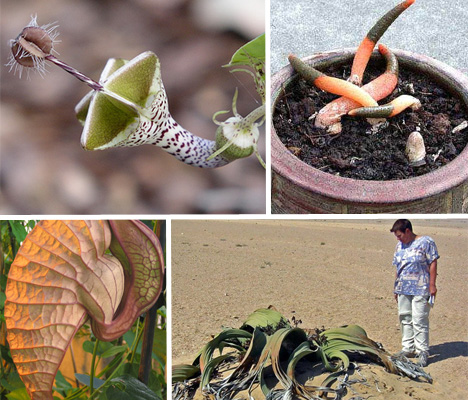
Plants that eat rats, slimy alien-looking fungi, leaves that dance all by themselves and flowers that smell like the rotting corpse of a horse: all of these wonders of nature are among the most rare, exotic and unusual plant species in the world. Some are astonishingly beautiful despite the foul odors they emit, while others look like they emerged from the mind of a horror writer, but they’re all fascinating examples of the diversity of Earth’s flora.
Rat-Eating Pitcher Plant (Nepenthes attenboroughii)
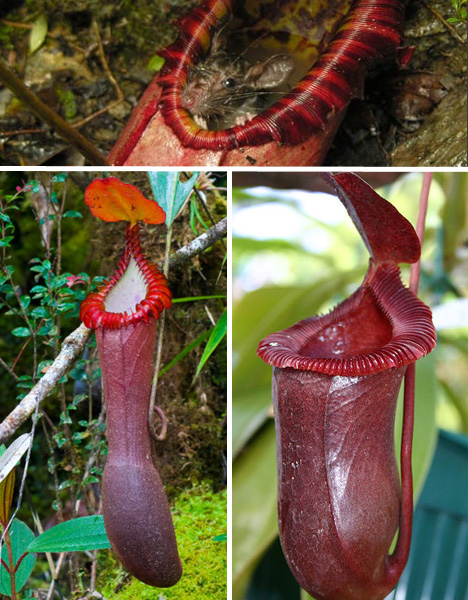
(images via: The Guardian, Wikipedia)
Even the most benign of pitcher plants is strange and amazing, but the species discovered in August 2009 may just be the weirdest carnivorous plant yet. It’s believed to be the largest meat-eating plant in the world, and is capable of digesting rats. Scientists found it on Mount Victoria in the Philippines and named it after famed nature broadcaster Sir David Attenborough.
Parachute Flower (Ceropegia woodii)
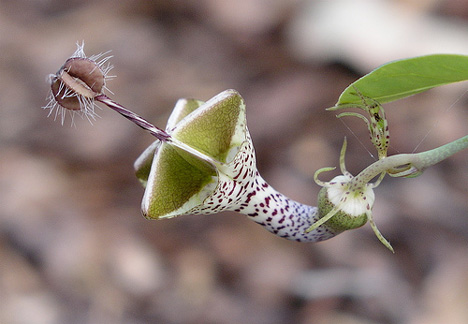
(image via: Wikipedia)
It looks like an artist’s rendering of extraterrestrial flora come to life: a bizarre flower with fused petals and what looks like a hairy lollipop coming out of it. The flower forms a tube lined with small hairs that point downward, so that insects attracted to the plant’s foul smell get trapped inside. The flower doesn’t consume the flies, though – it holds onto them until its hairs wither, and when the insects escape, they’re covered in the flower’s pollen.
Stinkhorn Mushroom (Mutinus Caninus)
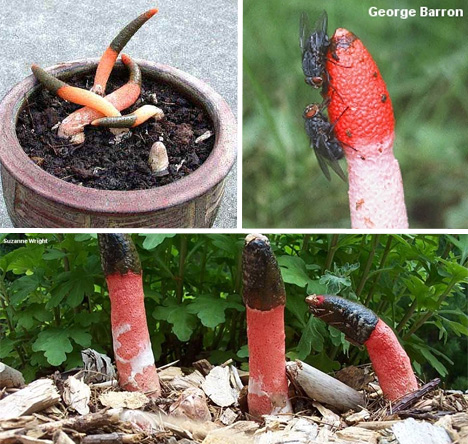
Could these be the ugliest fungi ever? Stinkhorn mushrooms pop up out of the ground in all their creepy, stinking glory, distributing their spores through the malodorous, muddy-looking slime found at their tips. This particular variety, mutinus caninus, is so named because it resembles a certain unmentionable body part of dogs.
Dancing Plant (Desmodium Gyrans)
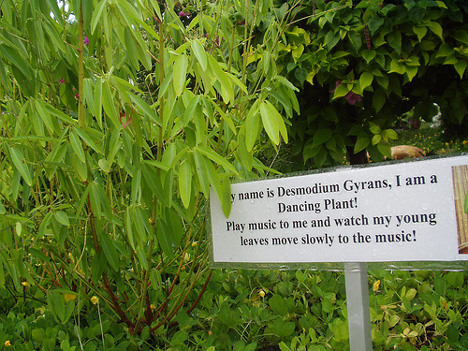
(image via: onekell)
[youtube=sgQ5CucGz2M] Have you ever watched a plant move all by itself? The “dancing plant”, also known as the telegraph plant, actually moves its leaves in jerky motions when exposed to direct sunlight, warmth or vibration – hence their reaction to music. Its leaflets, each of which is equipped with a hinge at the base that allows it to move, rotate along an elliptical path. This plant is famous for being a favorite of Charles Darwin, and is featured in depth in his book The Power of Movement in Plants.
Pelican Flower (Aristolochia grandiflora)
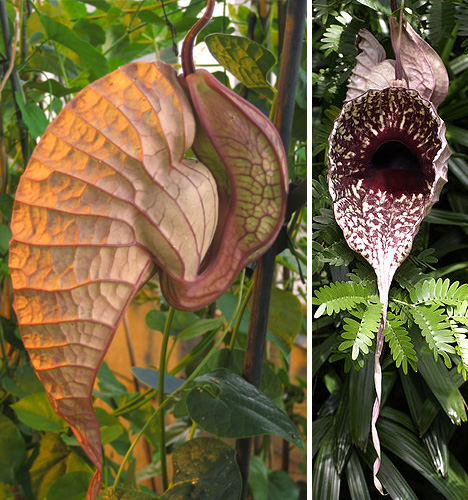
(images via: UC Botanical Garden & Wikimedia Commons)
These flowers are almost beautiful in their strangeness, with big inflated chambers instead of petals and intricate, colorful patterns of veins. But don’t get too close, or you won’t be able to get the dead mouse smell out of your nose for hours. No, this plant isn’t a carnivorous rat-eater like the Nepenthes attenboroughii – it just uses a decaying rodent smell to attract pollinators.
Sensitive Plant (Mimosa pudica)
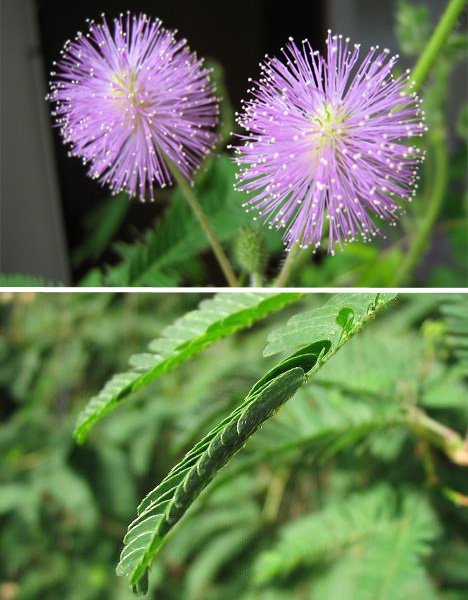
(images via: Wikimedia Commons)
You might say this pretty little plant with its starry pink blossoms and fern-like leaves is shy. Reach out and touch it, or even just blow on it, and its leaves will close up as if startled or protecting themselves. When it’s disturbed, the stems release chemicals that force water out of the cells, which makes the leaves appear collapsed. It’s not known exactly why the plant has evolved to possess this trait, but scientists think it may be to scare off predators.
Hydnora africana
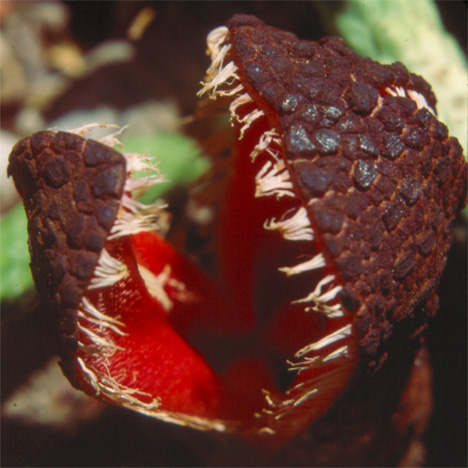
(images via: Botany.com)
This plant isn’t just unattractive, rising out of the ground like the head of a blind sea snake and opening its jaws to the world. It smells like feces, too. A parasitic plant that attaches itself to the roots of other species, Hydnora africana emits its pungent odor to attract carrion beetles and dung beetles, its natural pollinators.
Cycad (Encephalartos woodii)
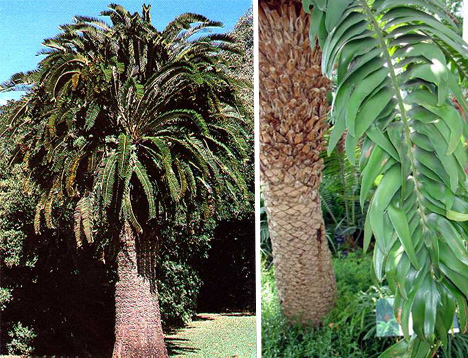
(image via: Pacsoa.org.au)
It’s one of the rarest plants in the world: a tall palm with dark, glossy leaves, once found only on a single south-facing slope on the edge of the Ngoye forest in Southern Africa. It’s extinct in the wild and produces no seeds – the only plants ever found were males. People have begun crossing it with its closest relative to produce ‘pups’ that, after 3 generations, are almost pure E. woodii again.
Dead Horse Arum Lily (Helicodiceros muscivorus)
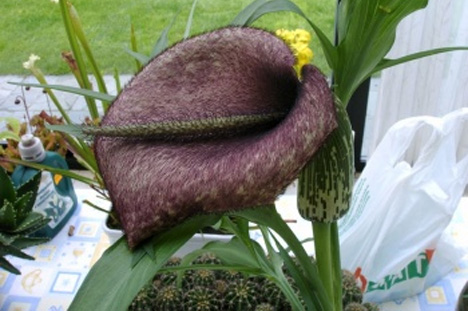 When a plant’s name has the words ‘dead horse’ in it, you know it’s bad news. H. muscivorus is a giant flower bearing the distinct scent of rotting meat, meant to draw in female blowflies which it captures inside its swollen cavity and holds there through its first night after flowering. It releases the flies, now covered in pollen, the following day to move on to neighboring H. muscivorus plants.
When a plant’s name has the words ‘dead horse’ in it, you know it’s bad news. H. muscivorus is a giant flower bearing the distinct scent of rotting meat, meant to draw in female blowflies which it captures inside its swollen cavity and holds there through its first night after flowering. It releases the flies, now covered in pollen, the following day to move on to neighboring H. muscivorus plants.
Flypaper Plant (Pinguicula gigantea)
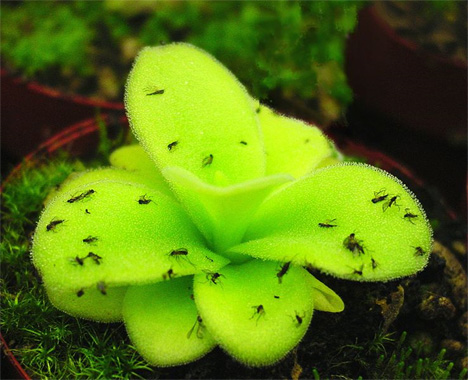 (image via: Wikimedia Commons) Call them opportunists, but butterworts – also known as flypaper plants – will grab hold of anything that lands on their leaves and immediately start digesting it. The upper surface of the plant is covered in sticky digestive enzymes to trap victims like mosquitoes and gnats, but it can also absorb nutrients from pollen.
(image via: Wikimedia Commons) Call them opportunists, but butterworts – also known as flypaper plants – will grab hold of anything that lands on their leaves and immediately start digesting it. The upper surface of the plant is covered in sticky digestive enzymes to trap victims like mosquitoes and gnats, but it can also absorb nutrients from pollen.
Welwitschia mirabilis
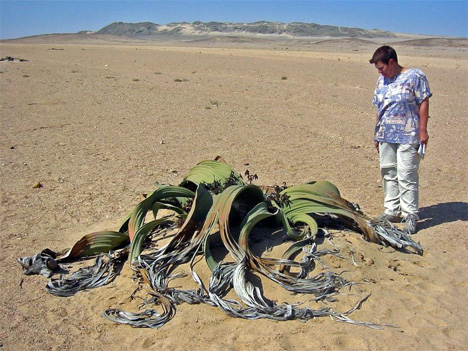
(image via: Wikimedia Commons)
If this desert plant looks like it came straight out of the age of dinosaurs, that’s because it did. Two succulent leaves continuously grow from the short, thick trunk, splitting over time into strap-shaped sections. The leaves can reach twelve feet in length. These odd plants are considered living fossils and can live up to 2,000 years.
Corpse Flower (Amorphophallus titanum)
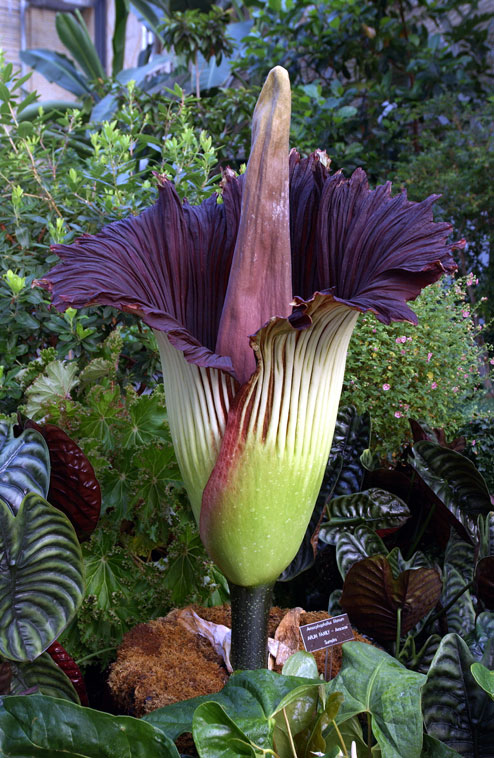
(Images via: metareligion and answers.com)
It’s the biggest flower in the world, and also the smelliest. The corpse flower, indigenous to the tropical forests of Sumatra, emits a pungent odor reminiscent of rotting flesh. Its central, phallus-shaped spadix warms to human body temperature during bloom to attract pollinators. The leaf structure of the flower can reach up to 20 feet tall and 16 feet wide.
Waterwheel Plant (Aldrovanda Vesiculosa)
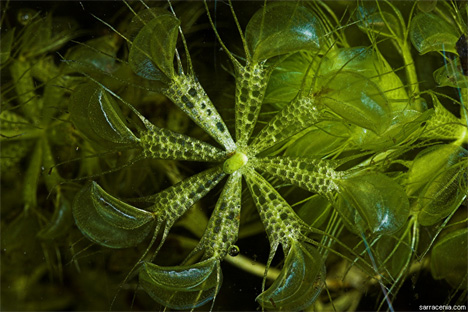
(image via: CarnivorousPlants.org)
Closely related to the Venus flytrap, the aquatic, free-floating waterwheel plant has similar snap-traps on the end of each ‘spoke’ emerging from the main stem. Each trap is covered in ‘trigger hairs’ that cause the trap to close when stimulated.
Wollemi Pine (Wollemia nobilis)
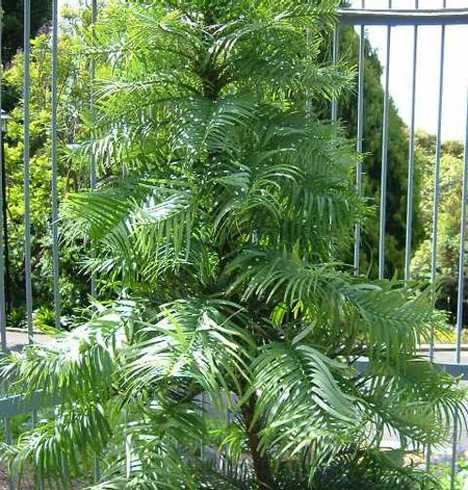
(image via: Wikipedia)
Wollemi pines have been around for at least 200 million years, but weren’t known to science until 2004, when a field officer at Wollemi National Park in Australia noticed what he thought was an ‘unusual specimen’. Fewer than 100 trees are known to be growing in the wild, but a propo
Snowdonia Hawkweed
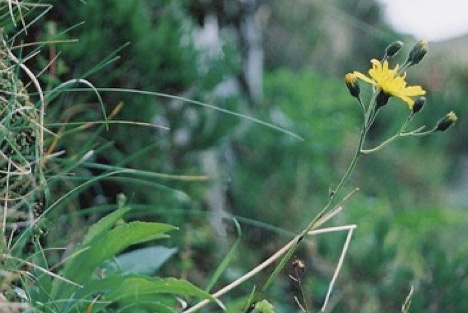
(image via: arkive.org)
It may not be smelly, oversized or weird looking, but Snowdonia Hawkweed may just be the rarest plant in the world. Botanists thought it had gone extinct decades ago, but in 2002 it was rediscovered growing on a mountain slope in Wales. "We were literally capering about for joy on the mountain ledges like lunatics when we found it," said Tim Rich, head of vascular plants at the National Museums and Galleries of Wales.
More:
- Mother Nature’s Most Unnatural-Looking Plants & Animals
- 7 Wonders of the Plant World: Bizarre Blooms
- 6 Unusual Plants And Monstrous Blooms
- 70 Extremely Exotic Plants, Flowers, Forests & Trees








